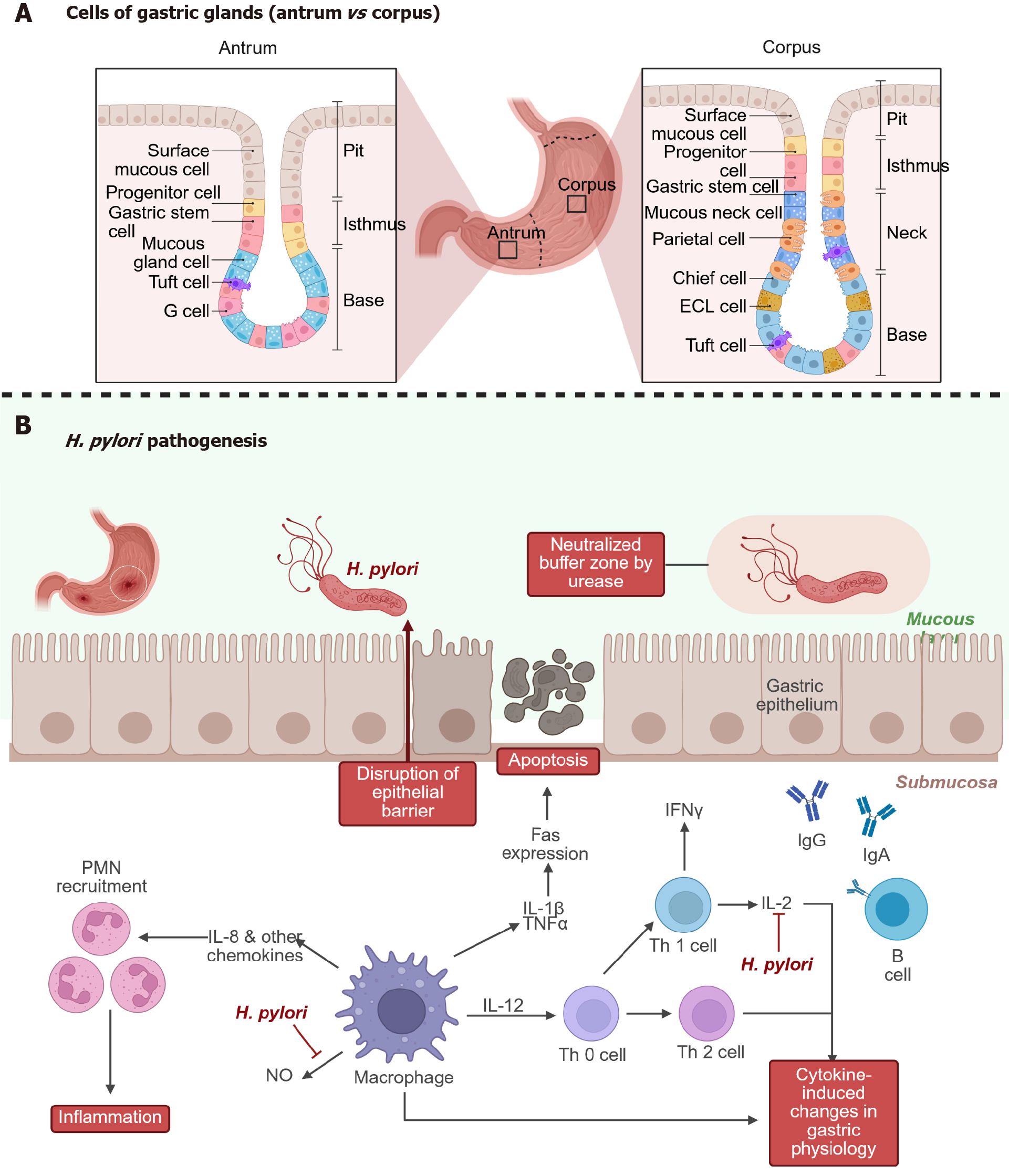Copyright
©The Author(s) 2025.
World J Gastroenterol. Jul 28, 2025; 31(28): 108297
Published online Jul 28, 2025. doi: 10.3748/wjg.v31.i28.108297
Published online Jul 28, 2025. doi: 10.3748/wjg.v31.i28.108297
Figure 2 The stomach, its structure and pathogenesis of Helicobacter pylori disease.
A: Comparison between gastric mucosa in the antrum and in the corpus; B: The pathogenesis of Helicobacter pylori infection-Helicobacter pylori reaches the stomach epithelium by swimming through mucus and neutralizing acid with urease. The bacterium adheres to epithelial cells and disrupts the epithelial barrier, leading to apoptosis and tissue damage. It induces interleukin (IL)-8 and other chemokines, which recruit neutrophils and macrophages. Cytokines like IL-1β, tumor necrosis factor-α, and IL-12 promote inflammation. Adaptive immunity is also engaged: T helper cells (Th1/Th2) and B cells produce antibodies (IgG, IgA), though often insufficient to clear the infection. The result is chronic inflammation, immune dysregulation, and cytokine-driven changes in gastric physiology. This may contribute to gastritis, ulcer formation, and even gastric cancer. H. pylori: Helicobacter pylori; PMN: Polymorphonuclear leukocyte; IL: Interleukin; TNF: Tumor necrosis factor; IFN: Interferon; NO: Nitric oxide.
- Citation: Skok K, Vihar B, Maver U, Gradišnik L, Bräutigam K, Trapecar M, Skok P. Gastrointestinal tract, its pathophysiology and in-vitro models: A “quick” reference guide to translational studies. World J Gastroenterol 2025; 31(28): 108297
- URL: https://www.wjgnet.com/1007-9327/full/v31/i28/108297.htm
- DOI: https://dx.doi.org/10.3748/wjg.v31.i28.108297









